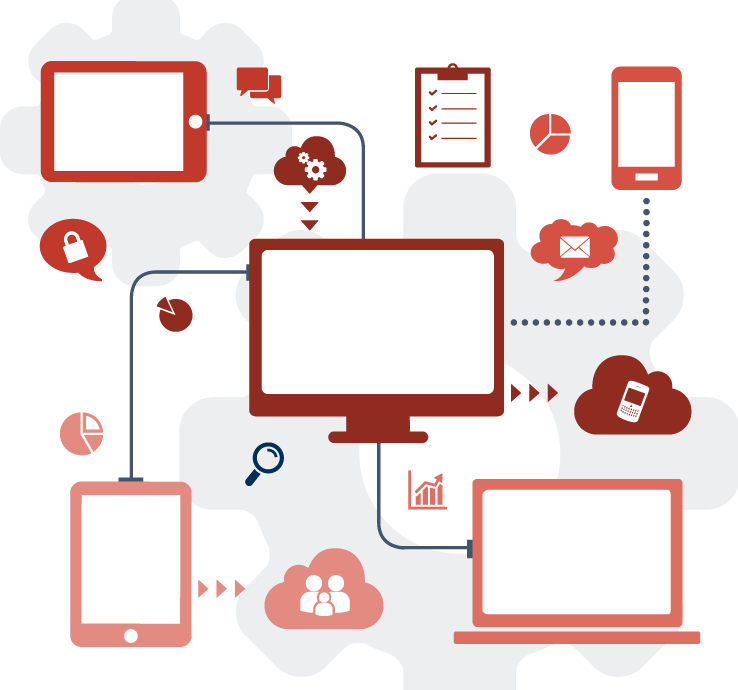2020 is coming to a close.
And as we know, a lot changed this year. The pandemic and economic shifts had a huge effect on the digital marketing landscape. So, what’s in store for 2021?
Here are 8 trends that we anticipate will shape the upcoming year.
#1: Increased digital ad spend
Digital ad spending took a big hit early in 2020 but rebounded pretty fast as companies pivoted.
A study by eMarketer and Business Insider Intelligence shows advertising on e-commerce platforms jumped almost 40% in 2020. That same study predicts another 30% jump in 2021, with U.S. digital ad spend accounting for 13% of that jump. It also projects display ad spend could increase by 10%. Brands need to make sure that people will actually find them across all of their channels.
This could definitely mean more digital ad spend. And with more ad spend comes also more pressure for digital marketers to perform and execute well across social media, SEO, etc.
With increased digital ad spend and pressure to perform, speed and efficiency will be key.
#2: No more third-party cookies
2021 might be the beginning of the end of the cookies world.
Chrome will stop supporting third-party cookies starting in early 2022, and where Google goes others often follow.
Apple has already announced this change as of June 2021. When Chrome and others stop supporting third-party cookies, your ability as a marketer to retarget and track customers and prospects will be affected in big ways.
There’s a lot of confusion about what this will all mean.
- Is this the end of tracking altogether?
- What does it mean for end-consumer consent?
- What tools exist to track user’s behavior in an efficient and ethical way?
We expect a lot to happen in 2021 as marketers and experts try to understand what a world without cookies will actually look like. Get ready to adapt to this change.
#3: Google Core Web Vitals
Google has made changes to Core Web Vitals.
This update is coming in May and will be a big deal this year. You’ll want to pay close attention to it.
This core algorithm update will look at how fast pages load for the device you’re using, your phone, tablet, or desktop, but it will go much deeper in analyzing a wide range of factors in the user experience.
It will be crucial to fix all the problems that you have on your website now before these changes actually take place in 2021.
#4: Interactive content
Let’s face it… folks are bored. The pandemic has taken away most of the habits that brought adventure and vibrancy to many people’s lives, from travel to dining out to simply interacting with friends.
As people search for new forms of escape, we’ll likely see most companies go beyond building interactive websites. We’ll also increasingly see interactive video, text, and ads. We’ve already seen a few on Facebook particularly with gaming companies where you get a micro version of the game on the social platforms.
A lot of people are getting tired of ads – there’s a saturation of mundane or basic pitches like the seven-day free trial or training session. We’ll see more interactive videos on Facebook, Instagram, maybe even YouTube as well. There are lots of tools online where you can create interactive videos already. Essentially these platforms enable you to take someone through the buyer’s journey via video. For example, let’s say you have a pet store. You can have a video that starts with “what’s your pet?” Your prospect customer can pick a dog, a cat, etc. The video then continues based on whatever pet is picked. We’ll likely see more advertisement platforms introducing that.
We’ll also see interactive text like quizzes or polls that show content based on your answers. We’ve seen a lot of companies creating quizzes to qualify prospects. This is a very hot sales strategy where essentially you push your prospects away by saying let’s make sure you’re a good fit for us.
You’ll want to make sure your prospect doesn’t feel like a number. The introduction of interactive ads, quizzes, and funnels will enable people to provide much more personalized service.
#5: Doubling down on digital
Businesses are doubling down in the aftermath of what’s been an unprecedented acceleration of the digital transformation of every kind of process imaginable.
In addition, we’ve seen an explosion of transactions on the web. For example, more time indoors has led to more time being spent on social media. This is driving new forms of social commerce and the boom of influencer marketing. According to Business Insider, the influencer marketing industry is on track to be worth up to $15 billion by 2022, up from as much as $8 billion in 2019.
What does that mean for us as marketers? Well, it means rethinking our customer journey, re-imagining how we touch prospects, and executing fast. It’s about optimizing our web presence in every way. It’s about being audience-led, putting our customers at the center of our strategy, social media activities, and the communications or communities that we build around them. And it’s also about respecting the fact that now there’s an expectation on us as companies to develop a digital footprint that’s there for our customers at every stage of the buying journey.
It may require repurposing or replacing our existing systems and determining:
- How we can personalize content for our individual audience members?
- How we can make our website work as well as possible on mobile?
- How can we use copy efficiently to reduce friction, as we guide users towards our objectives?
In the latter half of the year, we anticipate a switch to post-pandemic thinking. While certain digital-first habits will have been formed forever, more people will soon be defining what life after the pandemic looks like. That will shape their purchase habits as well as their interaction preferences.
# 6: Voice
Is audio the new video? We think so! All American households will have some kind of a smart speaker with voice search by 2022. And pretty much everybody has a smartphone these days. Siri, Alexa, podcast apps, voice memos, broadcasts on smart home devices are becoming grained in our everyday life. We use voice to set timers to turn lights on or off, play music, control the temperature… all these now regular occurrences were alien to most of us 3 or 4 years ago.
Voice search shopping is said to be a two billion dollar industry and is expected to grow to 40 billion by 2022. Brands should be thinking of how to get their products on top of that search. Voice will become a crucial consideration.
We think 2021 will see the rise of voice-enabled ads. What makes these captivating is the conversational nature between the ad and the listener. As people search for stuff that’s new and novel within their own homes, these may take on a life of their own!
#7: Artificial Intelligence
Artificial Intelligence (AI) is all around us. it’s unavoidable. Amazon, Google, Netflix, etc have large teams responsible for implementing AI in order to make us addicted to them. Our digital avatars are created from all of the things we do online whether from liking page statuses and photos to what we search and how we shop. The more complex and sophisticated that avatar is, the better and more refined targeting can be for advertisers.
There are AI-based ad creation tools such as Google’s Ad Exchange (AdX) which will create an ad based on the basic information you input. While AdX far from perfect (trust me, we know!), it has some significant promise. There are increasingly more applications of AI-based targeting by audience profile. We can now easily imagine the day when you can upload a customer file based on their hobbies and AI-based technology will suggest all the different audiences that you can run your ads to. That’s when we are really going to get a benefit from AI in advertising.
AI is expected to grow to a $190 billion industry by 2025. As the industry grows, the question of transparency and trust, as well as diversity in AI Data & Discrimination: The Challenges of Building AI has been raised. We can expect to see more advancements as developers fix the issues raised.
As marketers, we need to understand the implications of AI to our business and see where it makes sense to leverage machine learning for incremental or exponential efficiency.
Which AI tools do you know that really work well for you?
#8: Blockchain
Many people think blockchain is just the decentralization of currency aka cryptocurrency.
Whilst blockchain is all about decentralization, it has so many other uses. Blockchain will likely become increasingly useful in making advertising more secure. It can be used to get rid of spambots and fake accounts online because with the increasing use of blockchain we’ll know the origin of every single account out there.
It can also be used to enhance security on all levels within our companies.
These are 8 trends that we definitely think will shape the upcoming year 2021.
What trends do you think will shape 2021? What do you think will happen this year and how you’re getting ready for that?
Let’s make you look like a rockstar. It’s kinda what we do. Our exceptional team gives you peace of mind, so you can focus on other things.





